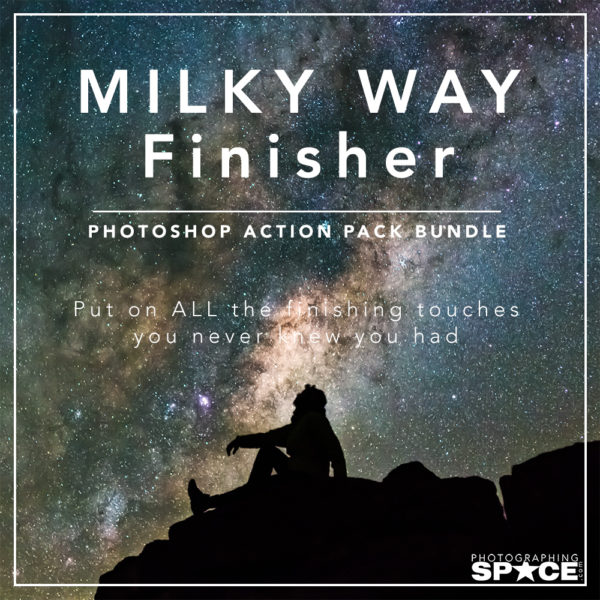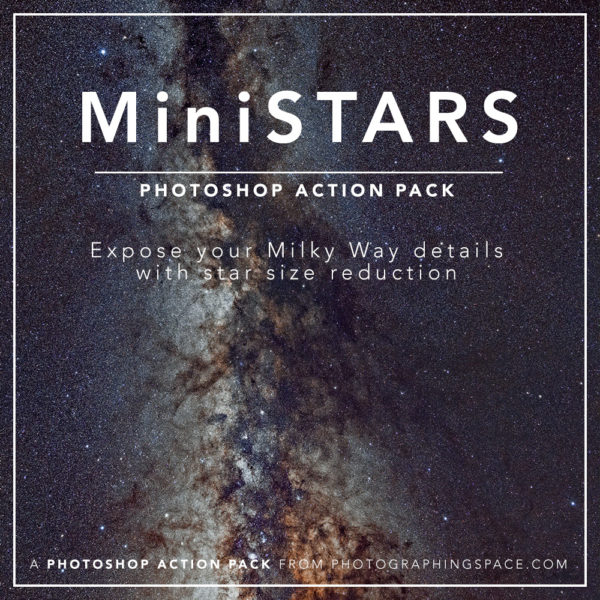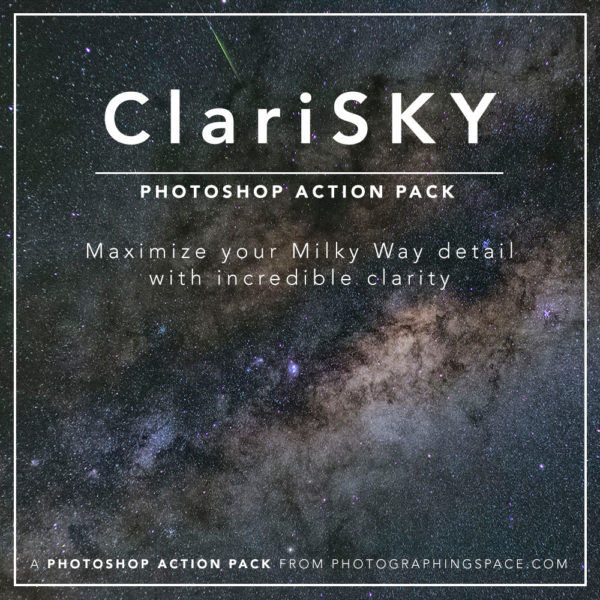I’m just going to leave this here…
…you might need time to gawk.
Here I am, minding my own business, checking out the latest astrophotography that was getting posted on social media…and BAM! Chuck Manges hits me upside the head with this plank-of-awesome and just dropped it in our collective laps.
He was like “here you go folks, I’m going to just nonchalantly fart and walk away…“, except this particular fart was more like rainbows, puppy dogs, and everything nice rolled into a ball of flattened beauty. It pretty much made my day.
Have another look. Take your time, it’s beautiful. And friggin’ huge.
After I picked myself up off the floor (and the floor was concrete — thanks Chuck), I took some time to catch up with the astrophotographer himself and creator of this masterpiece. He might not call it a masterpiece because he’s a modest fella, but I can, and will, and no one can stop me.
An interview with Chuck Manges
[Me]:
Chuck — can I you “Chuckster”? Cool. — Chuckster, just what are we are seeing here?
[Chuck Manges]:This is a 32 panel mosaic of the southern part of the constellation Orion. It’s part of the Orion Molecular Cloud Complex, which contains many dark, reflection and emission nebulae as well as HII [Hydrogen II] regions.

See it it full-size on Astrobin
Ok, cool. That sounds interesting. But…why did you choose this target?
Orion is one of the most recognizable constellations in the Northern Hemisphere’s winter sky. With so many different types of DSO’s, it’s hard not to image. 🙂 I’ve imaged each of the more notable objects (M78, M42, Horsehead Nebula) in the past and wanted to image them together in one image.
I’ve probably imaged the Orion Nebula (Messier 42) more than any other object, so I’d have to say it’s my favorite. It was actually one of the first deep sky objects I had ever seen through a telescope and one of the first I imaged many, many years later.
Makes sense, I like it too. Orion was also the first DSO I shot! Must make us brothers. So, how long did it take to create your image, from planning to completion?
I planned this in late September and started imaging as soon as Orion would rise. I finally finished up the mid part of March. From start to finish, 6 months, had the skies been clear it would have taken only weeks.
Everybody always asks “what were your camera settings?”
So, for those people: What are the photographic details of this image, from a technical standpoint?
I.E. — What were your camera settings? 😉
It’s a 32 panel mosaic, 8 wide by 4 high. The original image measured 22,220 pixels by 14,660 pixels. It took 13 hours 45 minutes to collect the 1,130 images I used to build this. I had roughly 12 clear nights in 6 months, and collected the following:
Filter type – # of frames x exposure time per frame
Luminance – 246 x 30 seconds
Red – 288 x 30 seconds
Green – 204 x 30 seconds
Blue – 219 x 30 seconds
Hydrogen alpha – 173 x 120 seconds
22,000+ pixels! Insane. Now that we have that out of the way, I want to know what you did wrong. Everybody likes to see people fail, right?
I had originally only planned for 21 frames (7 x 3). About half way through I decided to add more frames. Some of the overlap was slightly off as a result.
What was it that made you decide to change your approach?
I wanted to include M78 and part of Barnard’s loop, so I added 11 frames.
What did you learn from your early attempts?
This was my first complete LRGBHa mosaic with this many panels. I have done smaller mosaics before, but never with 5 different filters. 4 years ago I attempted something similar. My telescope/camera setup at the time required sub-exposures of at least 10 minutes. With the poor winter skies we experience here in Pennsylvania, it was next to impossible to reach the number of subframes I needed, so a “faster” telescope was needed. The f/2 speed of the Hyperstar has been worth it’s weight in gold.
I did not have any kind of mosaic “planner” at the time. I slewed the telescope manually to the next adjacent frame, making it impossible to re-image the next clear night and massive misalignment in frames.
What was your process with the mosaic planner?
This time around I used SGPro’s Mosaic Planner (We have a tutorial for this!) with a 20% overlap. In total, I only had to crop 300px around the perimeter of the image.
Starting with panel #1. I captured 3 Ha frames per panel until I reached panel #21. I put these together as a rough draft. From there I captured the remaining frames when possible.
Please explain your acquisition process. Dinner, glass of wine, dancing (obviously), then what…?
I use Wake on Lan to turn on the PCs. Then I go out to the observatory and open both shutters (It’s an Explora Dome without the automatic shutter kit). I uncover the telescope and make sure nothing will get tangled when the dome rotates. Then I either return to the house and remote into the observatory’s PC (using VNC viewer) or I stay in the obs if weather permits. Either way I turn on all the gear using an 8 port web switch.
Then I start the dome software, followed by acquisition software (either SGPro or APT). From there I connect all the gear to the software and begin camera cooling (-20C). While the camera is cooling I will slew to the target using the acquisition software, change filters on the Hyperstar if necessary, and get a rough focus. At this point I will plate-solve a test image and run an auto-focus routine, press run or start, and let the images collect. As each image is transferred from the ob’s PC to my home PC, I review them in PixInsight. Occasionally a frame is rejected by visual inspection.
Usually I stick with one filter per night so I don’t have to run out and change them. With the Hyperstar setup, filters are changed manually.
That sounds like an insanely cool system you’ve got set up. I’m jealous. Very. Green with envy. Can I move in?
[no comment…]
Moving on, what was the acquisition experience like? Did anything interesting happen? Snakes? Bears? Tigers? Sharks? Tiger sharks?
The only thing out of the ordinary was when there was clear skies.
Ha ha ha — it’s funny because it’s true. How and why did you know you were finished?
I made a spreadsheet of my captures arranged by filter. I scrambled towards the end to collect the remaining few images I needed. Once I filled the remaining boxes, I knew I could start assembling the image.
How very organized of you! When did you decide you had enough data?
I was hoping for at least 3 times the amount of data I captured, but stopped because of Orion’s position in the sky. I decided I had collected enough for this year. I have the mosaic scheme saved for next year.
*GASP* So you’re saying it could get better! How did you go about post processing this monster?
Starting with panel #1, I combined the LRGB as you would any normal image.
There were 5 sets of final stacks (images) for each panel (LRGB & Ha). Using PixInsight, I cropped any edges and used BackgroundModelization (ABE or DBE) on each color channel stack. Then I applied MaskedStretch and HistogramTransformation in IntensityTransformations.
I re-aligned the 5 images in Photoshop (due to the crop in PI). I would set each overlapping image to difference then use free transform to manually align each.
Leaving the lum and Ha off (not visible), each color stack was then colorized with the appropriate color (except lum & Ha). Using red as the base, I combined the green and blue by setting these 2 layers to Lighten and combine these 3 images using Merge Visible. I then used the luminance layer set to Luminosity over the RGB image and again Merge Visible. This resulted in 2 completed images, LRGB and Ha. Both were saved as TIF.
[WHEW…]
Once all 32 LRGB panels were built, I combined them manually using Photoshop into a mosaic. I would set each overlapping image to difference then use free transform to manually align each. Once aligned, I would correct any differences in brightness or color between panels, then use auto-blend to combine. I did the same to the Ha panels.
Once both the LRGB and Ha images were built, I aligned them in Photoshop as layers. At this point I rendered the Ha image as starless using Annie’s Astro Actions add-on in Photoshop. I did this so the stars would not become predominantly red. I colorized the Ha image red in Hue/Saturation and set the layer to lighten.
What else happened during post-processing that readers might like to know about? Did you melt the CPU cores of your computer or anything cool like that?
I took a wide field image taken with a QHY10 OSC and 50mm f/1.8 lens and combined it with the mosaic in Photoshop. Once I manually aligned the wide field image with the mosaic, I used Equalize, Gaussian Blur and set the layer to Soft Light. This did nothing to the details of the image, just made some of the colors “pop”.
This all seems like a very time-consuming process. What have you changed over the years to allow you create mosaics easier?
In Photoshop, I set each overlapping image (layer) to difference then use free transform to manually align each. I have done this from my first attempt a mosaic building. It has become easier than any other method I have tried…must be the all practice I’ve had. ☺
In the past I would align each filter channel into a single image first, then align these together. No matter how good my aligning process would be, there was always some mismatch. Aligning each LRGB to the next LRGB is a much better process and I tried it for the first time on this image. It only took me a few years to discover this, lol.
I want one. Where can we get a print?
RedBubble: https://www.redbubble.com/people/astrochuck/works/31098759-orion-mosaic-32-panel
GEAR CHECK TIME! Give us a rundown of the gear you used, everybody loves kit!
2 years ago I moved all my gear into an observatory I built in my yard. This is my main setup and used for this image.
- Mount: Orion HDX-110
- Telescope: 11” Celestron Edge HD w/Hyperstar
- Camera: QHY163M w/filter slider
- 2” Optolong Filters, LRGB-Ha

You have an observatory! Please elaborate…
2 years ago I built an observatory with 2 piers. The 12” large steel pier is surrounded by an 8’ Explora Dome. The small 8” concrete pier was an afterthought, it is a small room off of the main obs and has a roll off roof.


Details on the observatory build can be seen on my blog.
Where are you located?
Hooverville, Pennsylvania. Located 80 miles east of Pittsburgh in the Alleghany Mountains.
Mainly I shoot from my home observatory, but recently I started to journey out with my iOptron tracker and Canon T3i.
OK, you can come build my obs now. Looks good. Thanks.
But now let’s get philosophical: What is the best astrophotography advice anyone has ever given you? (besides reading PhotographingSpace.com, of course…)
Someone suggested once I build a permanent set-up on a pier and I have no regrets.
I was also advised the mount is the main ingredient in AP and that holds true. Recently I replaced my older mount with the Orion HDX-110. Although it is not one of the more expensive premier mounts, I have been able to shoot unguided at various focal lengths (2 minutes at 1960mm).
What have been the most valuable and informative AP resources to you?
The online world — asking questions early on in forums and groups. Most of the advice was sound. The hard part in the beginning was filtering out some of the self-proclaimed experts. The groups and forums have actually led to friendships with several well known astrophotographers (and I pick their brains often ☺).
Well, you’re one of those well-known people now, and that’s why I’m picking YOUR brain. Speaking of, what has been the best investment you’ve made into improving your AP? Asking for a friend…
For mosaics, hands down, the Hyperstar setup.
With limited clear nights, the speed of f/2 greatly decreases exposure times, allowing me to capture the number of frames needed. At f/7 I would need a few years to complete an image of this size. Unfortunately I’m not that patient ☺.
Coming in at close second would be the QHY163M camera I use. It’s a great fit for the Hyperstar and its sensitivity also decreased exposure times by over half.
Also as I mentioned above, having a decent mount on a permanent pier. This has cut out all the set-up time which uses up imaging time. Typically with my portable setup, I would no sooner get everything up and running and clouds would roll in.
What future plans do you have? More mosaics? Bigger mosaics? Better mosaics? What’s next?!
I would like to try another larger mosaic of the Rho Ophiuchi complex this summer. I would also like to give more attention to wide field imaging, as I started dabbling in it in the summer of 2017.
That will be amazing. Can’t wait to see your results!
You know we all start somewhere, and “somewhere” is usually a crappy image that still blows our minds. So, how did you get involved in astrophotography? What astro-skeletons are in your closet?
My parents made the mistake of getting me a department store telescope at age 7. All I can remember about the scope is that it was a reflector with a flimsy tripod. I “upgraded” to a Jason Enterprises 60mm refractor at age 10. I managed to spot Saturn with this scope and was hooked from then until now, 41 years later. When I was 25 I purchased my first real telescope, a 8” Meade LX-50 SCT. I used it mostly for visual work but attempted a few shots with film.

Above is one of several film images I attempted (c. 1996), 8” Meade SCT & Pentax 35mm at Prime Focus, manually guided 15minutes with OAG/Eyepiece.
After a few years, astronomy took a backseat to other interests, but was re-energized in the fall of 2011. I had never used a digital camera (other than point and shoot) until then, and had not used my telescope in over 10 years. My wife, daughter, and I were invited to go on a camping trip to Cherry Springs, Pa., so I brought my telescope along. There I met a photographer attempting to take some wide field milky way shots without any kind of tracking or motor drive. He and I decided to piggyback his camera to my telescope, a Canon DSLR. We took a couple of shots and I was shocked. I didn’t know images like that were possible from amateurs. After I got home and did some research, and I got my first DSLR camera, a Canon T3i. The astrophotography disease has spread rapidly since :).

Above is my first image with the Canon T3i/ 8” Meade LX-50 SCT, manually guided with OAG (it’s M31, BTW).
That first image I ever took just amazed me and I’ve been hooked ever since. There are secret treasures in the sky at night, hidden from our eyes, I like finding and sharing them.

Well, that’s just awesome. From those humble beginnings to THIS! Where can we see more of your work?
- Flickr: https://www.flickr.com/photos/astrochuck/
- Facebook: https://www.facebook.com/chuck.manges.5 or https://www.facebook.com/astrochucks/
- Astrobin: https://www.astrobin.com/users/Astrochuck/
- Blog: http://astrochuck.blogspot.com/







Add Comment